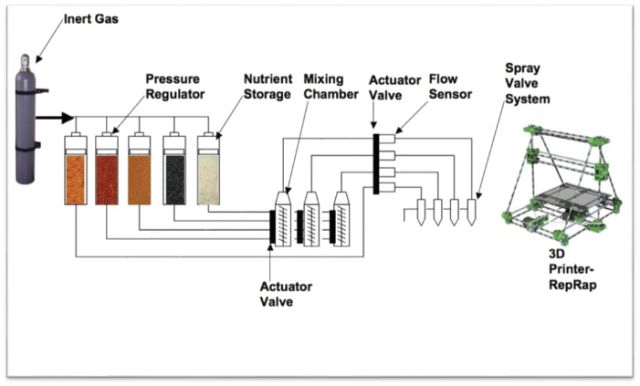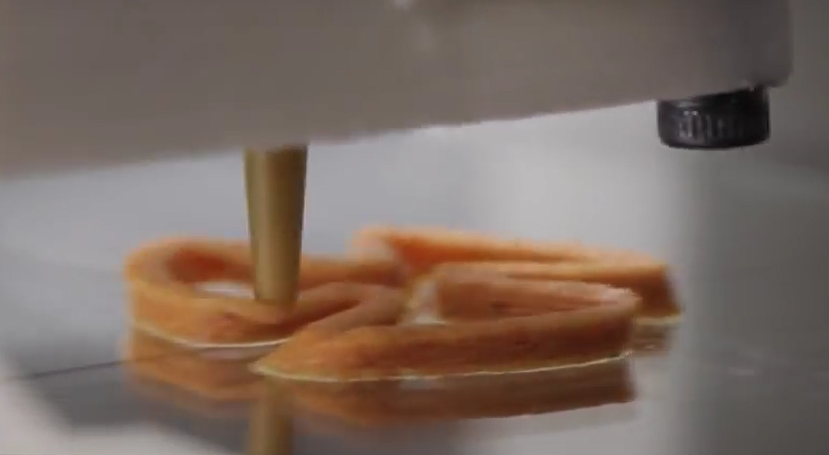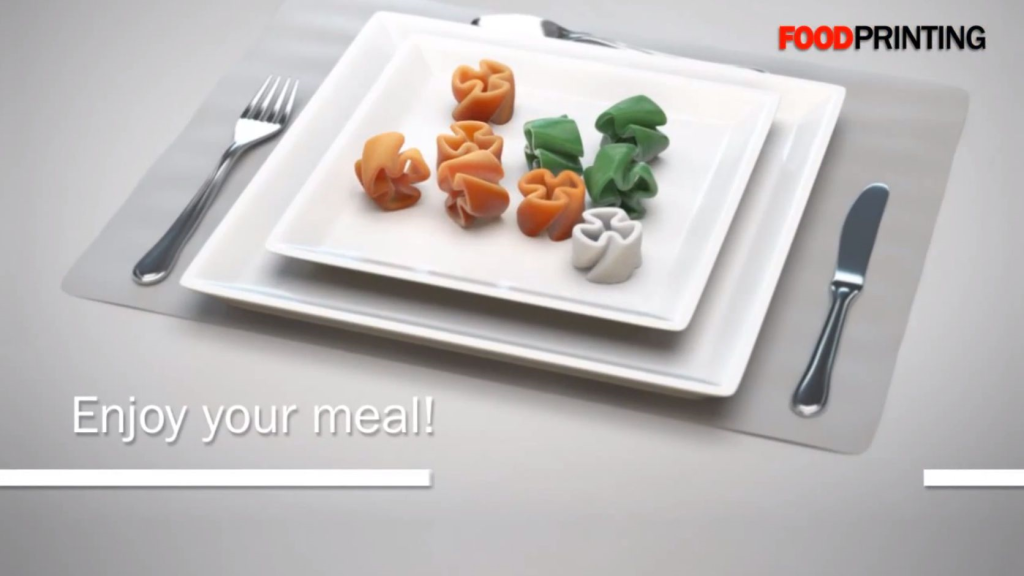Of all the 3D printing applications, a difficult one for people to stomach is one that affects the stomach. I am talking about 3D printed food. Why the controversy? In the past decades there’s been a growing awareness of the health limitations of industrial food production. Not only has fast food received a bad rap, due to popular documentaries like Morgan Spurlock’s “Super Size Me,” but the “slow food movement” challenges how we relate to food preparation. Author Michael Pollan’s books — The Omnivore’s Dilemma, In Defense of Food, and Food Rules — have had a big influence on people’s food behaviors. He tells us to slow down, eat mostly plants, and my personal favorite: “Don’t eat anything your great grandmother wouldn’t recognize as food.” If you take this rule to heart, what is the true future of 3D printed food?
 In this context of growing health and ecological awareness, 3D printed food awkwardly asserts itself and its own relevance. But how much growth will we see in this market beyond a gimmicky or boutique NASA niche, really? One answer to this question is provided by Anjan Contractor, whose BeeHex has received a $125,000 NASA grant to create a prototype for a universal food synthesizer. This type of machine prints food from powder and oil that will presumably contain everything necessary for well-balanced meals: protein, complex carbohydrates, etc. Still difficult to stomach? No worries. Contractor relies on a global population scare tactic to let us know that we are headed in the direction of 3D printed food anyway due to the world’s imminent population crisis:
In this context of growing health and ecological awareness, 3D printed food awkwardly asserts itself and its own relevance. But how much growth will we see in this market beyond a gimmicky or boutique NASA niche, really? One answer to this question is provided by Anjan Contractor, whose BeeHex has received a $125,000 NASA grant to create a prototype for a universal food synthesizer. This type of machine prints food from powder and oil that will presumably contain everything necessary for well-balanced meals: protein, complex carbohydrates, etc. Still difficult to stomach? No worries. Contractor relies on a global population scare tactic to let us know that we are headed in the direction of 3D printed food anyway due to the world’s imminent population crisis:
“I think, and many economists think, that current food systems can’t supply 12 billion people sufficiently. So we eventually have to change our perception of what we see as food.”
Because the population argument rests on speculation with too many external variables (for example, we would have to solve the digital divide for all people in order to introduce 3D printing) perhaps it will do Contractor well to stick to the niche market strategy for his vision of 3D printed food: outer space. His NASA grant is intended for a system that can print food for astronauts, and no worries in this department if you like mealworm, which is the major ingredient in the space breakfast food below.
Contractor has long-distance space travel food issues covered. He states:
“Long distance space travel requires 15-plus years of shelf life. The way we are working on it is, all the carbs, proteins and macro and micro nutrients are in powder form. We take moisture out, and in that form it will last maybe 30 years.”
 What is Contractor’s ideal form of 3D printed space food? Pizza! Still at the conceptual stage, a pizza printer embodies the perfect 3D printed food idea since you naturally build pizza in layers. First comes the dough, then the tomato base elicited from a powder form, and finally a top protein layer: bugs, anyone?
What is Contractor’s ideal form of 3D printed space food? Pizza! Still at the conceptual stage, a pizza printer embodies the perfect 3D printed food idea since you naturally build pizza in layers. First comes the dough, then the tomato base elicited from a powder form, and finally a top protein layer: bugs, anyone?
Still not finding this appetizing? Well, you may be drawn to the idea that all of Contractor’s creations will be open-source: the second generation RepRap 3D printer is the inspiration for his own food printing machine. Now if we can only wrap our minds, and stomachs, around the “alternative ingredients” that are said to constitute the “food-like starting material” that has been outlined by Dutch holding company TNO, which owns many tech firms.
Do you think your great grandmother would recognize food 3D printed from algae, duckweed, beet leaves, or insects? Probably not! In a space context, Martian pizza might make sense, but the verdict is still out on whether it will be Martian pizza for the masses — whether we like it or not. Tell us your thoughts in the 3D Printed Space Food forum over at 3DPB.com.
[Source: Quartz]Subscribe to Our Email Newsletter
Stay up-to-date on all the latest news from the 3D printing industry and receive information and offers from third party vendors.
You May Also Like
Precision at the Microscale: UK Researchers Advance Medical Devices with BMF’s 3D Printing Tech
University of Nottingham researchers are using Boston Micro Fabrication‘s (BMF) 3D printing technology to develop medical devices that improve compatibility with human tissue. Funded by a UK grant, this project...
3D Printing Webinar and Event Roundup: April 21, 2024
It’s another busy week of webinars and events, starting with Hannover Messe in Germany and continuing with Metalcasting Congress, Chinaplas, TechBlick’s Innovation Festival, and more. Stratasys continues its advanced training...
3D Printing Webinar and Event Roundup: March 17, 2024
It’s another busy week of webinars and events, including SALMED 2024 and AM Forum in Berlin. Stratasys continues its in-person training and is offering two webinars, ASTM is holding a...
3D Printed Micro Antenna is 15% Smaller and 6X Lighter
Horizon Microtechnologies has achieved success in creating a high-frequency D-Band horn antenna through micro 3D printing. However, this achievement did not rely solely on 3D printing; it involved a combination...































